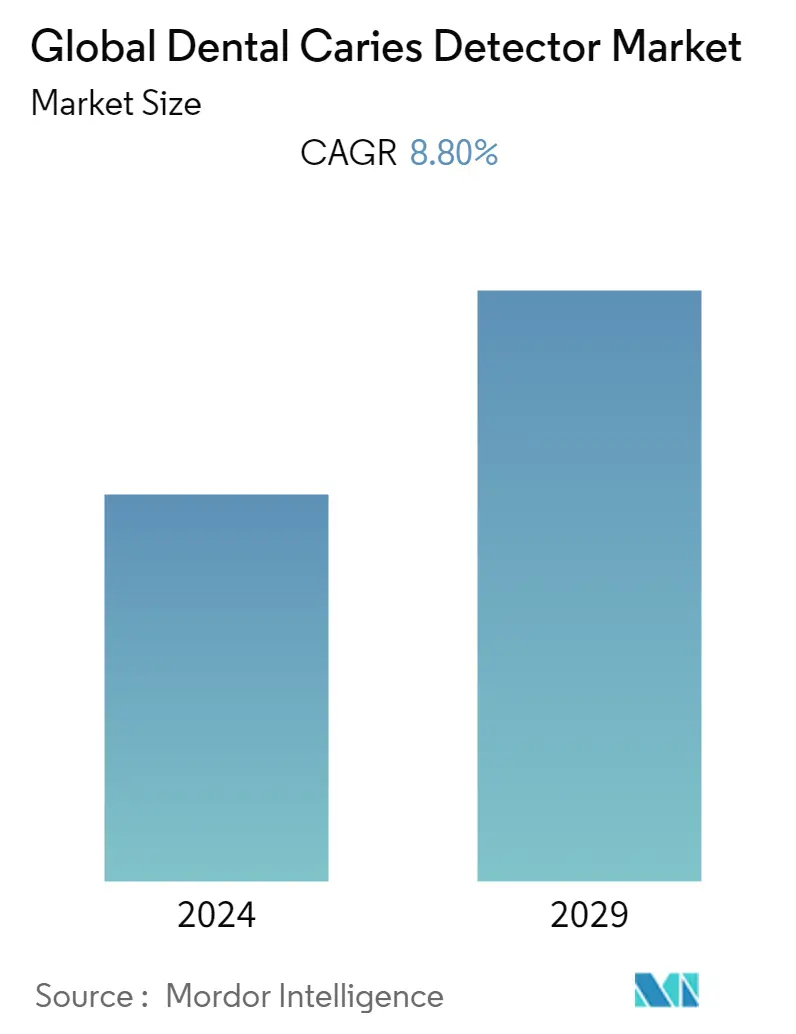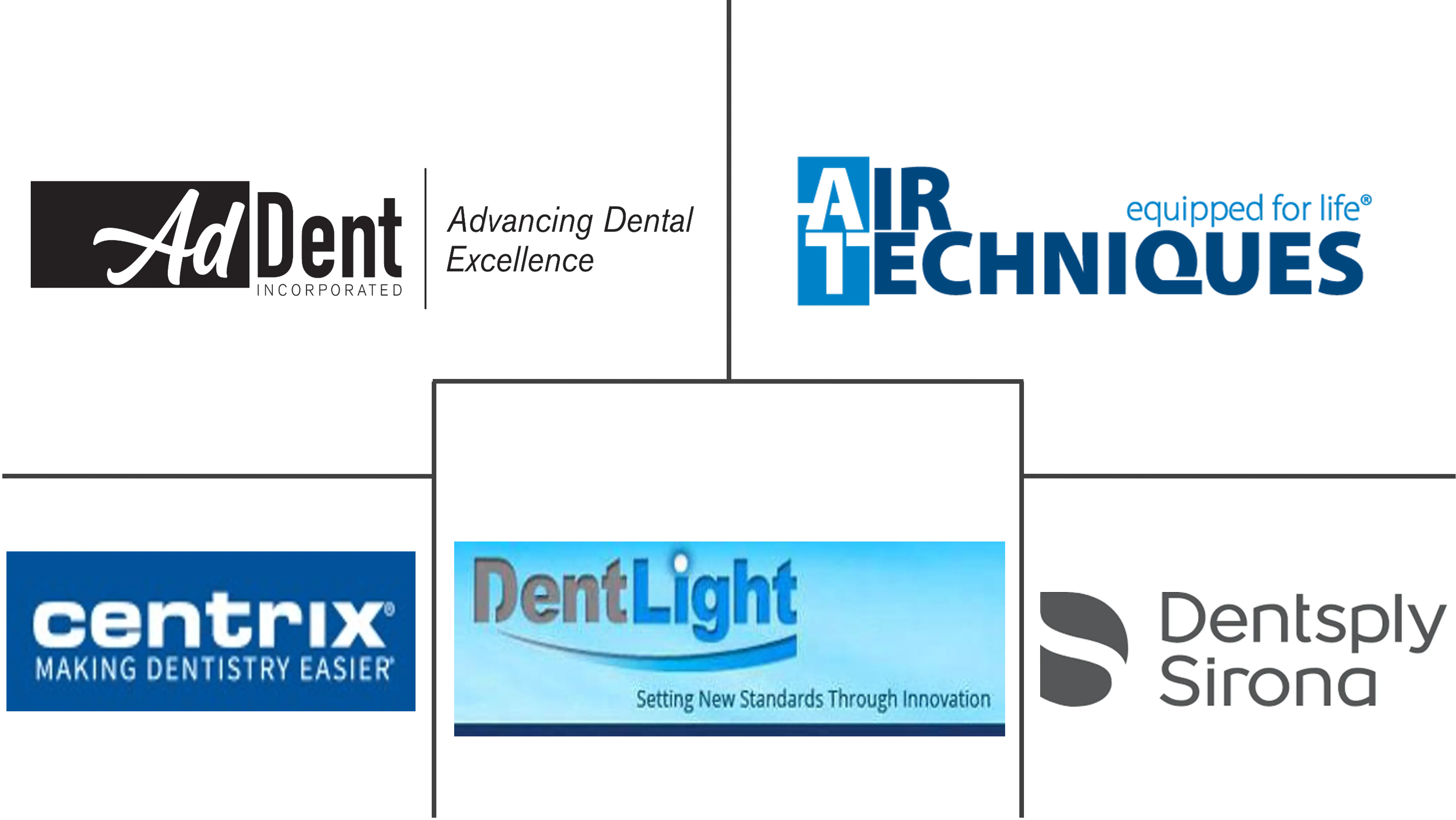Market Size of Global Dental Caries Detector Industry

| Study Period | 2019 - 2029 |
| Base Year For Estimation | 2023 |
| CAGR | 8.80 % |
| Fastest Growing Market | Asia-Pacific |
| Largest Market | North America |
| Market Concentration | Medium |
Major Players
*Disclaimer: Major Players sorted in no particular order |
Need a report that reflects how COVID-19 has impacted this market and its growth?
Dental Caries Detector Market Analysis
The dental caries detector market is projected to register a CAGR of 8.8% during the forecast period (2022-2027).
The coronavirus disease 2019 (COVID-19) pandemic has significantly impacted the healthcare system, particularly dental care. COVID-19, caused by the coronavirus that causes severe acute respiratory syndrome type 2 (SARS-CoV-2), is assumed to be transmitted by close contact via respiratory droplets and aerosols. Dentistry is hypothesized to be linked to the nosocomial spread of infection due to certain characteristics of dental care, such as aerosol generation and close closeness to patients.
The COVID-19 epidemic has wreaked havoc on various industries, with dentistry being one of the hardest hits. The epidemic of coronavirus disease 2019 (COVID-19) essentially shut down around 198,000 active dentists and dental specialists in the United States, according to an article published in August 2020 titled "COVID-19 and Dentistry: Challenges and Opportunities for Providing Safe Care."
Furthermore, many dental clinics see a decline in patient footfall due to the deep cleaning necessary following most procedures. As a result, the pandemic has had a twofold cost impact on dentists: on the one hand, increased expenditures and, on the other, decreased revenue. However, the COVID-19 epidemic has introduced new technologies and practice approaches to the dental sector. Tele-dentistry is intended to revolutionize the way dental treatment is delivered. Thus, the market is expected to see positive changes in the safe delivery of dental care, and an increase in the cost of availing care is imminent.
The market is primarily driven by increased dental caries and the need to treat them worldwide. As per a March 2020 update by the World Health Organization (WHO), it is estimated that oral diseases affect nearly 3.5 billion people globally, especially severe periodontal (gum) disease. Also, an article titled 'Dental Tourism 2021: Get Cheaper Dental Implants and Veneers Abroad,' published in Dentaly.org in December 2021, stated that dental implant tourism is a growing business attributed to cost savings. In addition, the World Health Organization (WHO) updated in March 2020, estimates that oral disorders impact approximately 3.5 billion people globally, and severe periodontal (gum) disease, which can lead to tooth loss, is also highly common.
The major causes of dental caries, the most frequent type of chronic disease seen globally, are changes in lifestyle owing to urbanization, excessive consumption of cigarettes, alcohol, and a poor diet, as well as a high intake of sugar. The demand for dental care has increased as the senior population has grown. According to Globe Demographic Prospects, by 2050, one in every six individuals in the world will be over the age of 65, up from one in every eleven in 2019, resulting in a population pool of around 1.5 billion people over the age of 65. With the growing geriatric population, the prevalence of dental diseases in these people are expected to increase and hence, the demand for dental services has observed a surge thereby, the market is expected to bosst over the forecast period.
Another element driving the market's growth is increasing technical advancements in dental caries diagnosis. For example, Near-Infrared (NIR) Trans-illumination and Digital Imaging Fiber Optic Trans-illumination (DIFOT) have made it possible to interpret images of interproximal lesions in a highly transparent and exact manner. This trend is likely to have a positive impact on the market studied.
However, the availability of alternative procedures for diagnosing dental caries is one of the major factors restraining the market growth.
